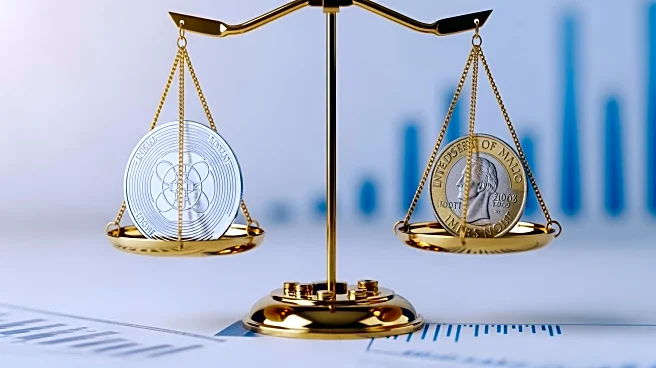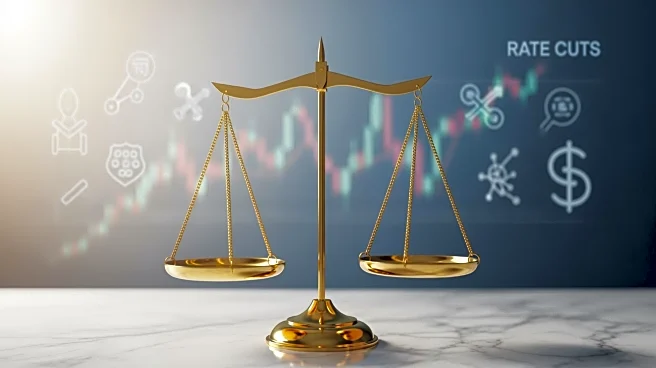What's Happening?
Federal Reserve Governor Stephen Miran has indicated that the widespread adoption of stablecoins could lead to lower short-term interest rates in the U.S. economy. Stablecoins, which are cryptocurrencies designed to maintain a stable value against the dollar,
are increasingly integrated into the financial system. Miran suggests that the growth of stablecoins could increase the net supply of loanable funds, pushing down the economy's neutral rate, known as R-star. This scenario could necessitate lower policy rates to support economic health, similar to the period of excessive global savings before the financial crisis two decades ago.
Why It's Important?
The potential impact of stablecoins on U.S. interest rates highlights the growing influence of digital currencies on traditional financial systems. As stablecoins bolster the dollar's dominance and increase demand for U.S. Treasury bills, they could lower borrowing costs for the government. This development may affect monetary policy decisions, influencing economic growth and stability. The integration of stablecoins into the financial system also raises questions about regulatory frameworks and the balance between innovation and risk management in the evolving digital economy.
What's Next?
The Federal Reserve and other financial institutions will likely continue to assess the implications of stablecoin adoption on monetary policy and economic stability. Regulatory bodies may explore new frameworks to address the challenges and opportunities presented by digital currencies. The potential for stablecoins to influence interest rates and financial markets will be closely monitored by policymakers, investors, and industry stakeholders. The ongoing dialogue around digital currency regulation and integration will shape the future landscape of the financial system.














